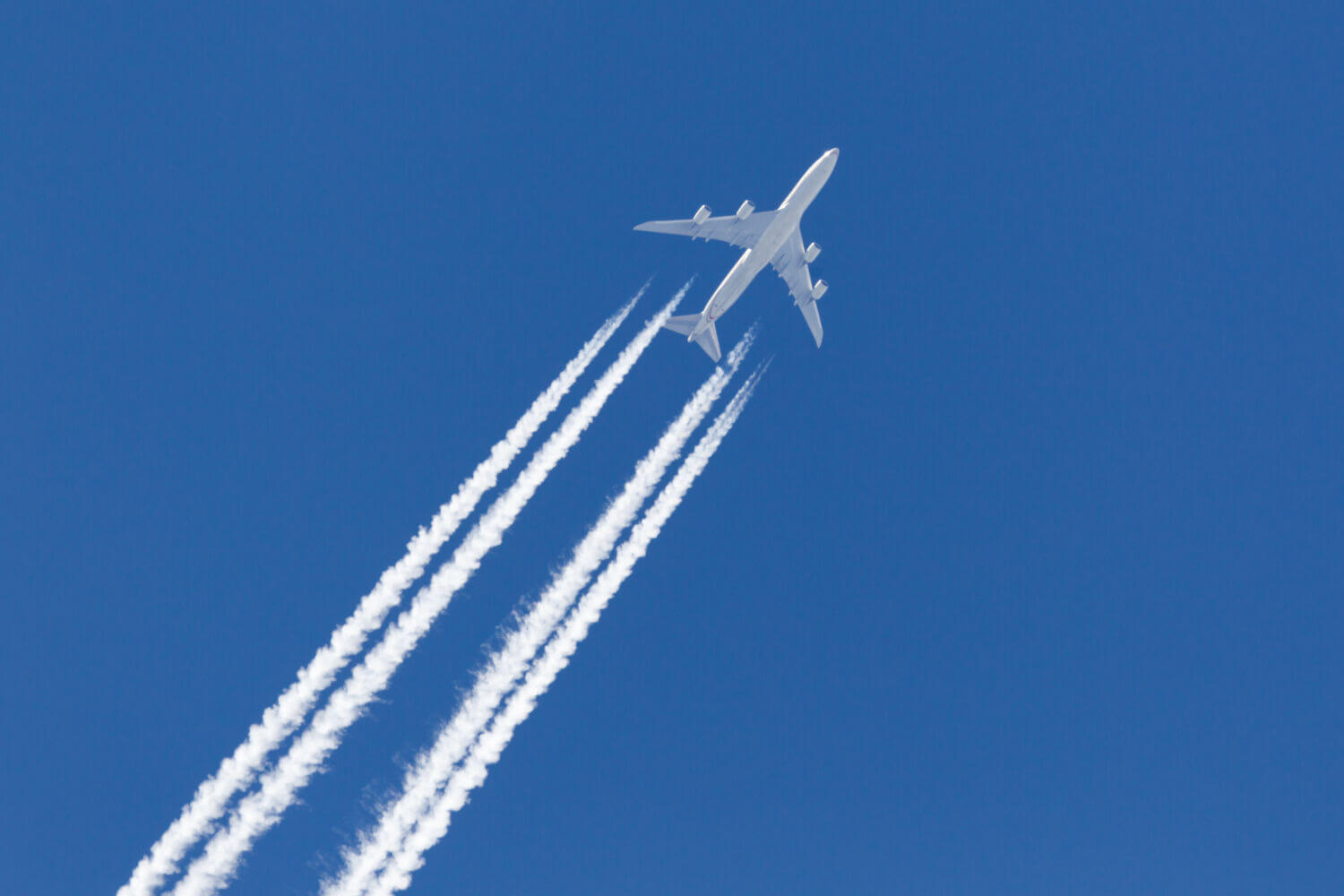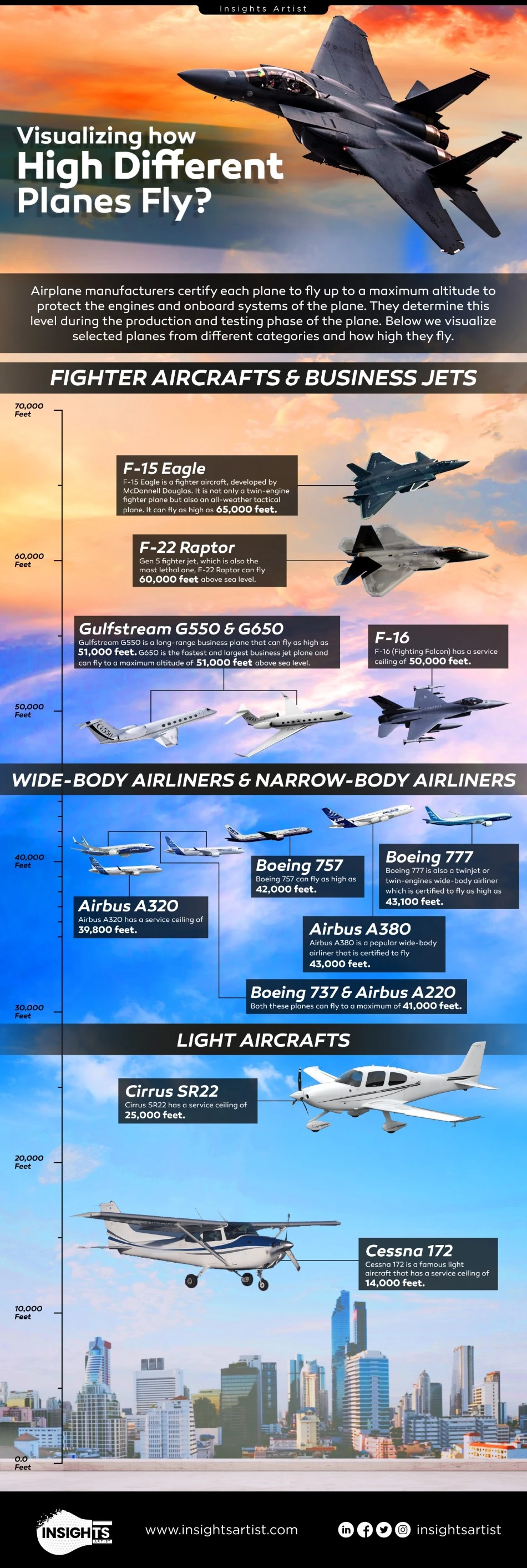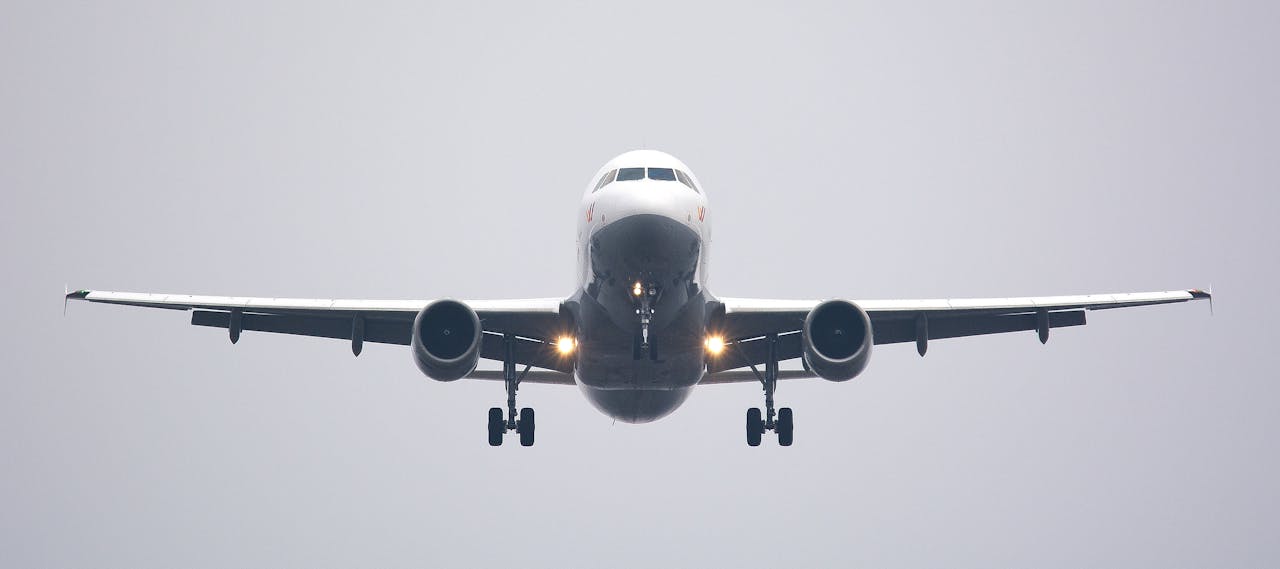How High Do Planes Fly? Unveiling Sky-High Secrets
Planes typically fly at altitudes ranging from 30,000 to 40,000 feet. At these heights, aircraft can avoid turbulence and have a smoother journey, while also conserving fuel and reducing air traffic congestion.
Airplanes are designed to operate efficiently at high altitudes, where the air is thinner and provides less resistance. This enables planes to achieve faster speeds and cover longer distances in less time. Higher altitudes also offer better fuel efficiency due to reduced drag, allowing aircraft to fly more economically.
Additionally, flying at higher altitudes minimizes the risk of obstacles such as mountains or tall buildings. Overall, flying at higher altitudes ensures a safer, smoother, and more efficient travel experience for passengers.
Credit: www.quora.com
The Sky As A Highway: Altitude Basics
Have you ever wondered how high planes fly in the sky? Understanding the altitude at which planes operate is essential to grasp the intricacies of air travel. Let’s delve into the basics of altitude and explore why planes soar to such great heights.
Why Planes Fly High
Planes fly at high altitudes to maximize fuel efficiency and ensure smooth travel. Higher altitudes offer less air resistance, allowing planes to fly faster and consume less fuel.
The Layers Of The Atmosphere
The Earth’s atmosphere is divided into five layers: Troposphere, Stratosphere, Mesosphere, Thermosphere, and Exosphere. Each layer plays a unique role in influencing flight altitudes.
Commercial Jets: Cruising Heights
Commercial jets reach cruising altitudes typically between 30,000 to 40,000 feet, ensuring smooth flights and fuel efficiency. Flying at these heights allows planes to navigate above most weather disturbances and optimize performance for a comfortable journey.
Commercial jets are the most common type of aircraft that people travel on. These planes fly at high altitudes to ensure a comfortable and safe journey for passengers. The cruising altitude of a commercial jet is determined based on various factors, including the plane’s weight, the distance of travel, and weather conditions. In this section, we will explore the average altitudes of commercial jets and the factors that influence their flight levels.
Average Altitudes
Commercial jets typically fly at an altitude of 35,000 feet (10,668 meters) above sea level. This altitude is called the “cruising altitude” because it is the most efficient altitude for the plane to fly at. At this altitude, the air is less dense, which means the plane can travel faster and use less fuel. However, the cruising altitude can vary depending on the type of plane and the distance of travel. For example, smaller planes may fly at a lower altitude of 20,000 to 30,000 feet (6,096 to 9,144 meters), while larger planes like the Airbus A380 can fly as high as 43,000 feet (13,106 meters).
Factors Influencing Flight Levels
Several factors influence the flight level of a commercial jet. These include:
- Weight of the Plane: The weight of the plane affects its ability to climb and maintain altitude. The heavier the plane, the more power it needs to stay at a high altitude.
- Distance of Travel: Longer flights require higher altitudes to save fuel and reduce travel time.
- Weather Conditions: Turbulence and adverse weather conditions can force a plane to fly at a lower altitude to maintain stability and safety.
- Air Traffic: Air traffic congestion can limit the altitude a plane can fly at, forcing it to fly at a lower altitude.
In conclusion, commercial jets fly at high altitudes to ensure a safe and comfortable journey for passengers. The cruising altitude of a plane is determined based on various factors, including weight, distance of travel, and weather conditions. By understanding these factors, passengers can better appreciate the complexity of commercial air travel.
Private Vs. Military Aircraft: A Comparative Glance
When it comes to aviation, the skies are filled with a diverse range of aircraft, from private planes soaring through the air to military jets pushing the limits of altitude. Understanding the differences between these two types of aircraft can provide valuable insights into their capabilities and the purposes they serve.
Private Planes In The Sky
Private planes, also known as general aviation aircraft, encompass a wide variety of aircraft that are owned and operated by individuals, corporations, or flight clubs. These aircraft are primarily used for personal travel, business trips, and recreational purposes. Unlike commercial airliners, private planes offer a more personalized and flexible flying experience, allowing individuals to travel to remote locations or avoid the hassle of commercial airports.
Private planes generally fly at altitudes ranging from 10,000 to 45,000 feet. This altitude range provides a balance between fuel efficiency, air traffic separation, and a smooth flying experience. The majority of private planes operate within the lower altitude range, as it allows for shorter flight times and easier access to smaller airports with shorter runways.
Private planes are designed to operate in a variety of weather conditions and can reach speeds of up to 600 miles per hour. With their ability to fly at lower altitudes, private planes offer passengers breathtaking views of the landscape below, making the journey an enjoyable part of the travel experience.
Military Aircraft: Beyond The Limit
Military aircraft, on the other hand, are specifically designed for combat and defense purposes. These high-performance jets are capable of reaching incredible altitudes and speeds, pushing the boundaries of what is possible in aviation.
Military aircraft often fly at altitudes exceeding 60,000 feet, allowing them to operate above commercial air traffic and potential threats. This high altitude provides military aircraft with strategic advantages, such as increased range, speed, and the ability to conduct surveillance or engage in aerial combat.
In addition to their extreme altitudes, military aircraft possess advanced technology and weaponry systems, making them formidable assets in times of conflict. From stealth capabilities to supersonic speeds, these aircraft are designed to outperform and outmaneuver the enemy.
It’s worth noting that military aircraft also have the ability to fly at lower altitudes when necessary, such as during takeoff, landing, or specific mission requirements. This flexibility allows them to adapt to different operational needs and carry out their missions effectively.
In conclusion, private planes and military aircraft serve distinct purposes in the aviation world. While private planes offer convenience, comfort, and flexibility for personal and business travel, military aircraft excel in combat capabilities and can operate at extreme altitudes and speeds. Understanding the differences between these aircraft types sheds light on the diverse nature of aviation and the roles they play in our modern world.
The Science Of Altitude: Why It Matters
Have you ever wondered how high do planes fly? Planes can fly at a range of altitudes, from just a few hundred feet to over 40,000 feet above the ground. But why does it matter? The answer lies in understanding the science of altitude.
Fuel Efficiency In The Clouds
One of the primary reasons why altitude matters is fuel efficiency. The higher the altitude, the thinner the air. This means that planes can fly more efficiently because they experience less drag. As a result, planes can use less fuel and travel longer distances without refueling. For example, a Boeing 747 can travel up to 8,000 miles without refueling at a cruising altitude of around 35,000 feet.
Safety And Weather Considerations
Another reason why altitude matters is safety. Flying at high altitudes allows planes to avoid turbulence and severe weather conditions that can be hazardous to both passengers and the aircraft. Additionally, flying at high altitudes allows planes to avoid obstacles such as mountains and tall buildings. This is especially important during takeoff and landing when planes are at their lowest altitudes.
In conclusion, understanding the science of altitude is crucial to understanding how planes fly and why altitude matters. Whether it’s for fuel efficiency or safety reasons, the altitude at which a plane flies is carefully chosen to ensure a smooth and comfortable flight for passengers, while also ensuring the safety of the aircraft.
Technological Marvels: Aircraft Design
Technological marvels in aircraft design have enabled planes to reach astonishing altitudes, pushing the boundaries of what was once thought possible. The engineering and innovations behind these achievements are truly remarkable.
Engineering For The Altitudes
The engineering of aircraft designed to reach extreme altitudes involves meticulous planning and cutting-edge technology. Aerodynamic principles are harnessed to ensure optimal lift and stability, while lightweight yet durable materials are used to withstand the harsh conditions at high altitudes.
Innovations In Aerospace
The aerospace industry has seen remarkable innovations that have propelled aircraft to ever-greater heights. From advanced propulsion systems to state-of-the-art avionics, these innovations have revolutionized the way we think about high-altitude flight.

Credit: www.flightdeckfriend.com
Navigating The Heights: Air Traffic Control
When it comes to the fascinating world of aviation, one question that often arises is how high do planes actually fly? The answer lies in the hands of the diligent professionals working behind the scenes in air traffic control. These unsung heroes play a vital role in ensuring the safety and efficiency of air travel, coordinating the movements of planes soaring through the skies.
Keeping Skies Safe
Air traffic control is responsible for maintaining the safety of the skies by preventing mid-air collisions and ensuring that each aircraft maintains a safe distance from others. This is achieved through a combination of advanced radar systems, communication networks, and meticulous coordination between air traffic controllers.
By constantly monitoring the position, speed, and altitude of each aircraft, air traffic controllers can make split-second decisions to avoid potential conflicts. They use sophisticated software and tools to track the movement of planes, allowing them to guide each aircraft along specific flight paths and altitudes.
Coordination At Altitudes
One of the key aspects of air traffic control is coordinating the flow of air traffic at different altitudes. To ensure smooth operations, airspace is divided into different sectors, each with its own team of controllers responsible for a specific area. These controllers collaborate closely to ensure a seamless transition as planes pass through their respective sectors.
Coordination is essential, especially when planes need to climb or descend to different altitudes. Air traffic controllers communicate with pilots, providing them with clear instructions on when and how to change their altitude. This coordination is crucial in preventing conflicts between aircraft and maintaining an organized flow of traffic.
Moreover, air traffic control also plays a vital role in managing the spacing between aircraft during takeoff and landing. By carefully sequencing the departure and arrival of planes, controllers ensure that there is enough separation to maintain safety while maximizing efficiency.
In conclusion, air traffic control is a critical component of aviation that ensures the safe and efficient navigation of planes at various altitudes. Through meticulous coordination and constant monitoring, air traffic controllers keep the skies safe by preventing collisions and maintaining an orderly flow of air traffic. Their dedication and expertise contribute to the smooth operation of the aviation industry, allowing us to travel the world with confidence.
Challenges Above: The Perils Of High Altitude
Exploring the skies, planes face daunting challenges at high altitudes. From health risks to technical troubles, the perils of flying at extreme heights can pose significant dangers.
Hypoxia And Health Risks
Hypoxia, or oxygen deprivation, is a critical concern at high altitudes. Reduced oxygen levels can lead to impaired cognitive function and even loss of consciousness, endangering both passengers and crew.
Technical Troubles In Thin Air
Navigating the thin air at high altitudes presents unique challenges for aircraft systems. Engine performance can be compromised, and instrument accuracy may be affected, demanding precise calibration and monitoring to ensure safe flight.

Credit: insightsartist.com
Future Skies: The Next Frontier In Aviation
The future of aviation holds exciting advancements that promise to revolutionize the way we travel through the skies. From supersonic speeds to eco-friendly innovations, the next frontier in aviation is set to redefine the possibilities of air travel.
Supersonic And Beyond
Imagine traveling at speeds faster than the speed of sound, cutting down travel time significantly.
Eco-friendly Highs
Embracing sustainable practices to reduce carbon emissions and minimize environmental impact.
Frequently Asked Questions
How High Do Commercial Airplanes Fly?
Commercial airplanes typically fly at altitudes between 31,000 and 38,000 feet, which is around 5. 9 to 7. 2 miles above sea level. This altitude provides the best combination of fuel efficiency, air density, and passenger comfort.
What Factors Determine The Cruising Altitude Of A Plane?
The cruising altitude of a plane is determined by factors such as the aircraft’s weight, the distance of the flight, air traffic control instructions, and weather conditions. Pilots aim to fly at the most fuel-efficient altitude while considering safety and comfort.
Why Do Planes Fly At High Altitudes?
Planes fly at high altitudes to benefit from reduced air resistance, which increases fuel efficiency. Additionally, flying at higher altitudes allows planes to avoid weather systems and take advantage of favorable wind patterns, resulting in shorter travel times.
Conclusion
Understanding the altitudes at which planes fly is fascinating and essential for travelers. Whether it’s a commercial jet or a military aircraft, the skies offer a vast range of cruising levels. By exploring the heights at which planes operate, we gain a deeper appreciation for the marvels of aviation.

